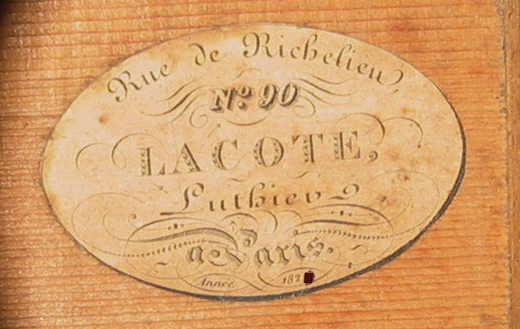Lacote was the most important and influential guitar-maker in 19
th century France.
He was schooled by Pons, himself a highly talented craftsman, the preferred luthier the impératrice, wife of Napoleon Bonaparte.
Lacote made the transition from craftsman creating a handful of instruments each year, to business leader. Over the 19th century, he, like Jean-Baptiste Vuillaume, moved through the ranks to become entrepreneur, tutor, pioneering craftsman, in tune with what the techniques and dynamics of the century could offer him. He left a legacy comprising literally hundreds of different guitars, as contrasting as they were elegant, and collectively a fine illustration of constant passion through fast-changing times.
He remained the peerless leader of the 19th century Parisian guitar-making scene, only to be dethroned by a new era of guitar made popular by the Spaniard maker Antonio de Torres.
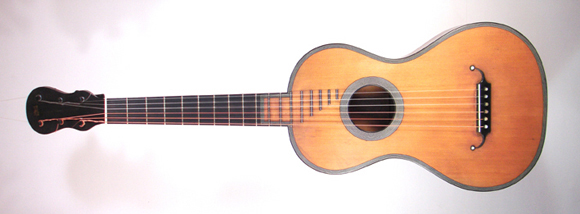
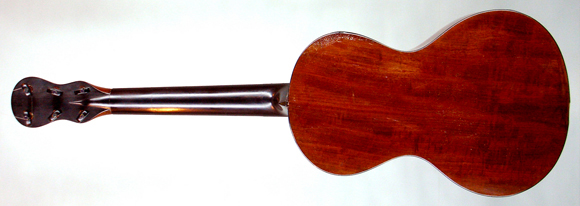
The bridge of this guitar, which had previously been repaired in 1897 by London-based Italian luthier Antonelli, had been removed and sloppily reglued with some offset. In doing so, the 6 bridge pin holes had been doubled, leaving a wide horizontal 12-hole strip that severely handicapped the soundboard. The pressure thus exerted meant the string tension had ripped out both the bridge and part of the soundboard between the two rows of pin holes, leaving behind a gaping split of two straight seam cracks in what is a key strategic position for the acoustic performance of the instrument.
We had to set ourselves a restoration strategy:
- We could settle with repairing the breakage and regluing the bridge onto its damaged support, then reassembling the instrument. In the current state of affairs, the bridge has virtually no solid anchor surface and would soon unhinge the underlying soundboard along with one or more other soundboard pieces that were still structurally weakened by a series of holes.
- Or, before regluing the bridge, we could filler the rip-out-damaged hole in the soundboard to strengthen the structural support given to the bridge and provide an adequate surface area to glue onto. This would entail fitting the soundboard with a piece of sprucewood then resealing the bridge, making sure not to stack two freshly-glued sections.
- Or else we give simply give up on this otherwise interesting guitar.
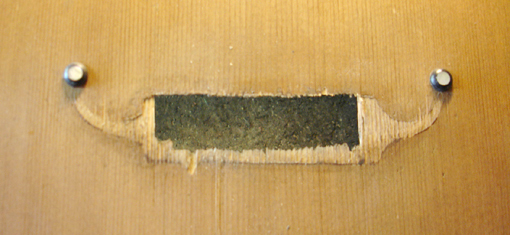
It was indeed a beautiful guitar, and so in concert with the owner, we elected to rebuild the guitar as a playable piece, which meant following option two. We carefully removed the ebony binding from around the back of the guitar, and opened the instrument from the bottom up. Since the two clefts in the soundboard were still relatively fresh, it was a relatively straightforward process to satisfactorily reglue them.
We had set ourselves a restoration strategy based on the customer’s hopes and on the work we considered necessary, useful and intelligent to best conserve the long-term integrity of the guitar. Given that the instrument was a classic and therefore not exceptionally rare model of an 1830s Lacote guitar, given the trademark top-quality sound and resonance, and given that 1830, at least in guitar-making terms, is not so far in France past, with instruments created by the master craftsmen of that time only now reaching the peak of their musical capacities and potential, we decided to fit this guitar with a sculpted graft to fill the exposed area of the visible cleft in the soundboard. The objective was to deploy of a special gluing system to provide satisfactory resilience while maintaining the original thickness of the soundboard.
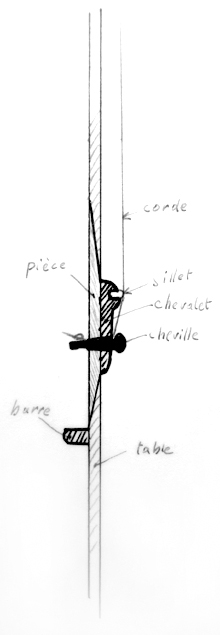
This involved inserted a dual-bevelled part between the two planes of the soundboard.
First off, we had to find a piece of the same type of spruce with of an age as close as possible to the part of the soundboard that was missing. Many years ago, a customer graciously offered us an irreparable Lacote soundboard dating from 35. It was incomplete (about a quarter of it was missing), terribly damaged with splits and cracks all over, and we had long since replaced it on the original shell. This left us with a soundboard that we could ‘dip into’ whenever we needed shims for Lacote guitars that we are asked to repair. This soundboard was evidently not in exactly the same wood as the original, but it presented the merit of dating from roughly the same period as the guitar and having been worthy of selection by the original luthier.
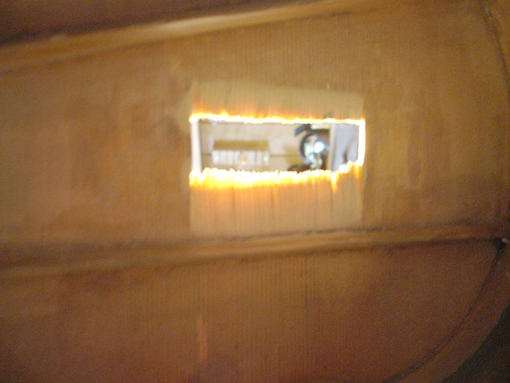
Working over an area about 3.5 cm below the hold and 2 cm above the hole, we bevelled the soundtable, shaving it down to zero. Once the cracks had been glued up, the sides of the hole were glued back together. We chalked out a piece of our Lacote-spruce reserve soundboard to create a graft whose outside surface would cover the cleft without making the hole appear any bigger while the inside surface, almost twice as wide but maintaining the same overall thickness of the soundtable surface, left enough gluing surface to create a pad strong enough to anchor the bridge and resist the tension of the strings.
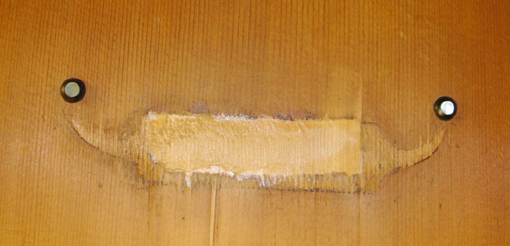
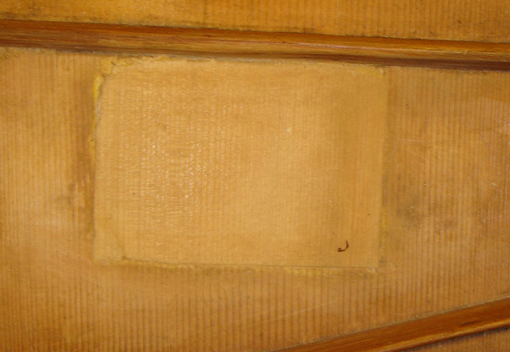
We reglued and remounted the bridge and then reworked the slots in the soundtable via the holes in the bridge which was reset to the original position. We closed up the guitar, re-laid the ebony binding surrounding the base, and restringed the instrument. After leaving the strings tightened for a few days, we had a musician play the guitar.
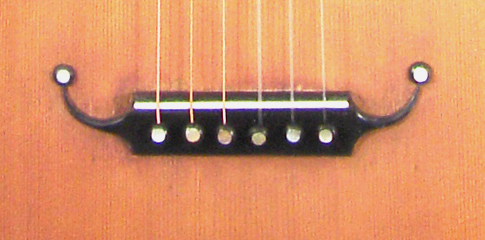
The final result was well worth the problems faced during the restoration, and we were immensely proud to witness the guitar rediscover its role, its excellent intonation and its original appearance.
At the musical instrument restorers congress organized by the INP and the Paris Museum of Music in November 2005, it was suggested that our restoration of this instrument employed “excessive technical virtuosity”, to cite the expression used. This is not, however, our own opinion.
In fact, according to our understanding of the ‘Riegl scale’ system applied to this important but not absolutely unique instrument that was sound but freshly damaged, we performed a mechanical restoration to make the instrument playable without ruining its integrity, conserving the characteristics and ‘touch’ of the author. The customer was willing to let us simply reset the bridge onto Antonelli’s poor restoration, which was not in the right place, and thus perform a ‘cosmetic repair’ with fake stings that would mean this fatally weakened instrument could not withstand being restringed and would therefore never play again. However, this option would not have satisfied the owner-collector, would not have satisfied the musician, certainly not the restorer, and in our humble opinion would not have satisfied the curator either, for what good is a guitar that has lost its function and its aesthetics, and which cannot even exemplify a prestigious author’s work, a historical integrity, a particular repertoire, which is essentially no longer part of our culture?
